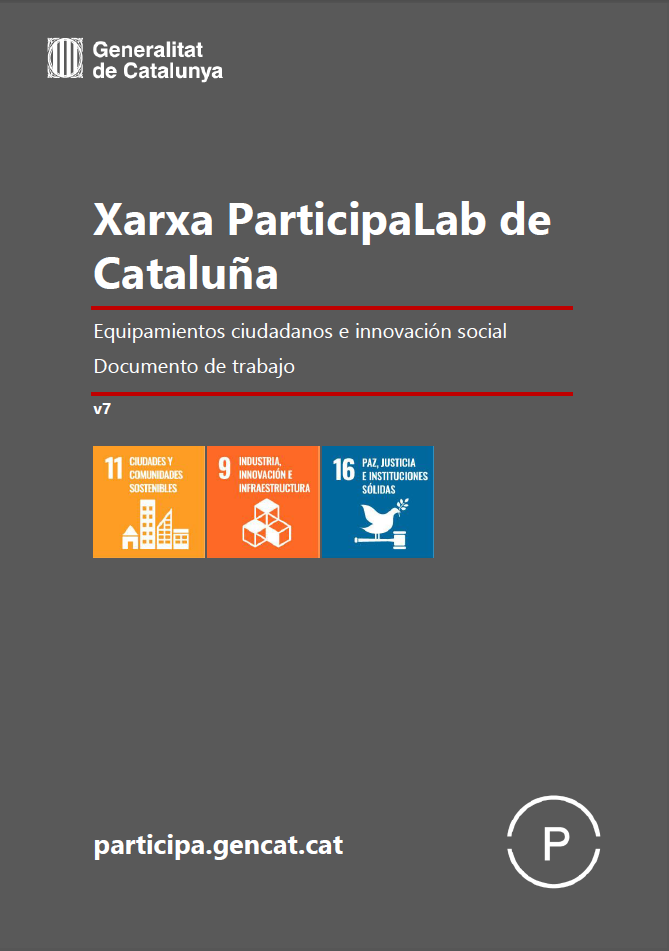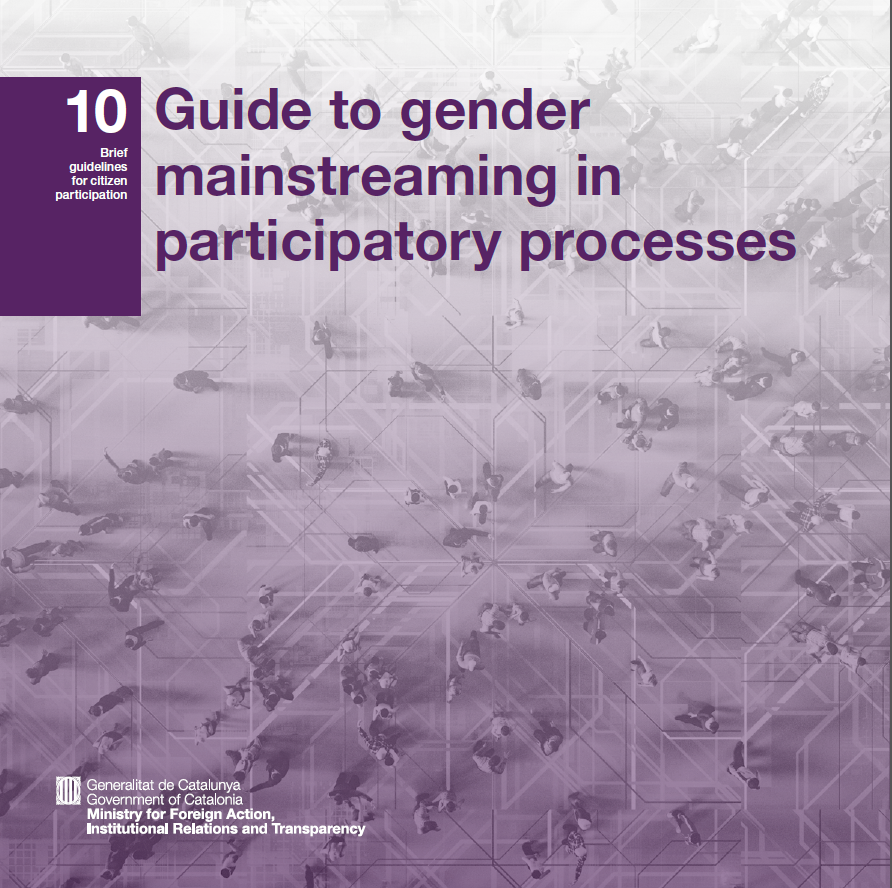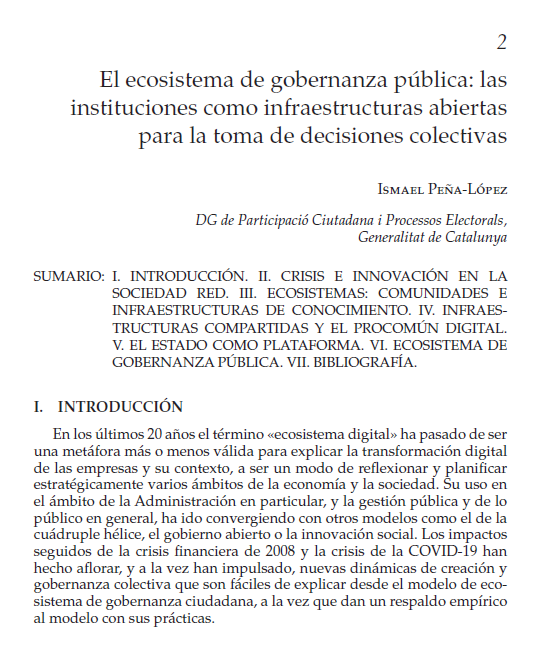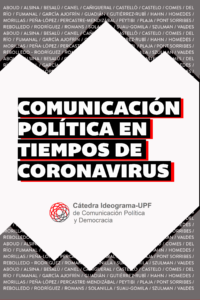When working with the idea of the citizen participation ecosystem from the point of view of a national government, one of the basic questions is how the Administration should nurture and facilitate such ecosystem. There are, at least, two approaches that have been traditionally explored.
- On the one hand, the Administration can fund the creation or growth of a body of professionals that can contribute to deploy a number of citizen participation initiatives all over a given territory. These professionals can work at the higher level of the Administration or can be distributed or scattered on lower levels of the Administration (i.e. local administrations), but the result is to be able to cover most necessities with a good amount of trained and dedicated professionals.
- On the other hand, and sometimes compatible with the former approach, the Administration can fund the creation or growth of a constellation of facilities that would run initiatives specifically devoted to the promotion of citizen participation. They can have many names depending on their particular focus or especialization: citizen labs, living labs, social innovation labs, fabrication labs (fab labs), maker spaces, etc.
The problem with these approaches is, at least, double:
- They are not very economically sustainable, as they require and maintaining groups of people and networks of facilities with a single purpose and which can very difficult be replicated or scaled outside of their specific area of intervention. Of course this is a goal worth aiming at, but for starters it makes the investment very demanding.
- They are not very socially sustainable, as they divert the attention and focus of the citizen, which now has new places to go, which can be good, but also bad: people have a limited capability to gather at and to focus their attention on.
Another approach is to leverage the fact that there are already public facilities on place and that people are already using them and gathering around them. Thus, instead of creating a new network of people and facilities in addition to the existing ones, another approach could be creating a new network of people and facilities upon the existing ones, or in other words, overlapping new goals and uses with the already existing ones.
The Catalan ParticipaLab Network aims at just that. We borrowed the name from the successful ParticipaLab initiative of the Medialab-Prado in Madrid (Spain) but with the idea not to create a new big facility, not even a network of small facilities, but to weave a network of citizen labs by providing a portfolio of new content and services to the already existing networks. The logic behind it is to follow Artur Serra’s ideas on citizen labs, who proposes thinking of citizen labs as we do in public health systems: there is a large network of primary health care you go to when you feel sick, a second network of regional hospitals you are sent to if things get complicated, and national network of top-level hospitals you are sent to when the situation becomes really bad. Same would apply to citizen participation and social innovation.
With that logic in mind, big top-level citizen labs would be the top-level hospitals of democratic innovation; regional networks of living labs or fab labs or maker spaces would be the regional hospitals, and… and already existing public facilities should be able to act as primary democratic innovation points of access for the general population at the local level.
A first approach to this scheme I drafted it at The role of public facilities and civic centres in a citizen participation ecosystem.
After this first scheme, my colleague Yago Bermejo and I (much more him than I, truth be told) developed the main principles, guiding lines and preliminary portfolio for such a network of public facilities devoted to citizen innovation for quality democracy.
The result is the report Xarxa ParticipaLab de Cataluña. Equipamientos ciudadanos e innovación social [Catalan Participation Lab Network. Public facilities and social innovation], which is expected to be the blueprint and roadmap to deploy such a network from the Catalan Government. The report is in Spanish and Catalan and can be downloaded below.
Downloads
Although I had been long interested on gender studies, during December 2018 and the first months of 2019 I began to actively search for documents that dealt with the issue of gender (discrimination, inequality, etc.) on citizen participation. I found out that there was quite a lot of literature on gender and democratic institutions, but nothing specifically on gender mainstreaming in participatory processes.
So, at the Directorate General of Citizen Participation and Electoral Processes we decided to do our own research and project on the issue. With the valuable help of Fundació Surt, and after an initial training, we analyzed public procurement, the facilitation of events, the evaluation processes, information and communication protocols, etc. under the light of gender mainstreaming.
The result was triple. First, the aforementioned analysis and evaluation; second, a set of internal protocols to improve our own work; third, a Guide to gender mainstreaming in participatory processes so that anyone in the field of citizen participation can use and apply in their own citizen participation instruments.
The guide has been published in Catalan and English (see below) and the whole project was distinguished by the IOPD with a special mention in their distinction on the “Best Practice in Citizen Participation”, the award given annually by the International Observatory on Participatory Democracy to recognize public policies implemented by local governments.
Below one can download the guide and access the bibliography I personally used on gender planning and evaluation methodologies in relationship with citizen participation.
Downloads
Bibliography
Berbel Sánchez, S. & Geronès i Rovira, M. (2008). “
Participació política de les dones”. In Bodelón, E. & Giménez, P. (Coords.),
Desenvolupant els drets de les dones: Àmbits d'intervenció de les polítiques de gènere, Capítol 12, 199-231. Col·lecció Estudis, Sèrie Igualtat i Ciutadania, 2. Barcelona: Diputació de Barcelona.
Delatte, M., Guijarro, B., Almirall, J., Llop, N., Adell, H. & Medrano, A. (2018).
Anàlisi de la participació de dones en els espais institucionals i socials mixtos de la ciutat de Barcelona. Barcelona: Ajuntament de Barcelona, Liquen Data Lab.
Ecologistas en Acción (2018).
Patriarcalitest. Madrid: Ecologistas en Acción.
United Nations Human Settlements Programme (2012).
Gender Toolkit. New York: OCHA.
Xarxa d'Economia Solidària de Catalunya (2017b).
Reunions roDONES. Barcelona: XES.
At the beginning of the COVID-19 crisis I wrote about the differential impact of crisis in the Information Society based on the first fact that were quickly becoming evident before our eyes and at plain sight.
Shortly after, professors Josep M. Reniu and Víctor Meseguer led a monography on how the COVID-19 crisis was impacting democratic institutions and what to do about it. The book ¿Política confinada? Nuevas tecnologías y toma de decisiones en un contexto de pandemia [Confined politics? New technologies and decision-making in a pandemic context] focuses on how institutions are responding to a pandemic that keeps people at home or away from each other, and how they are figuring out ways of keeping in touch with citizens and keep performing the tasks they have been committed to.
I wrote a book chapter, the second one, with the aim to provide a wide landscape on how democratic institutions and the democratic arena are configuring themselves, and how the pandemic crisis may be an accelerator to it. On El ecosistema de gobernanza pública: las instituciones como infraestructuras abiertas para la toma de decisiones colectivas [The ecosystem of public governance: institutions as open infrastructures for collective decision-making] I take the idea of the citizen participation ecosystem to a higher level, trying to scale it up to the global public governance level.
To do so, I introduce the concept of ecosystems on social sciences, which have been applied with much success —in my opinion— to describe the quick deployment of digital business infrastructures. I describe such ecosystems as knowledge communities and infrastructures that wrok in open and shared ways, aiming at the building of a digital commons. Following, I review the idea of ‘the state as a platform’, ending up with a definition and proposal of the ecosystem of public governance, which I define as:
A public governance ecosystem is a technopolitical, self-organized, autopoietic, replicable and scalable system that articulates actors, spaces and instruments around a set of open and distributed infrastructures rich on knowledge for collective decision-making.
A preprint of the whole chapter (in Spanish) and the bibliography I used can be accessed below.
Downloads
Bibliography
Chesbrough, H.W. (2003). “
The Era of Open Innovation”. In
MIT Sloan Management Review, Spring 2003, 35-41. Cambridge: MIT Sloan School of Management.
Dini, P., Darking, M., Rathbone, N., Vidal, M., Hernández, P., Ferronato, P., Briscoe, G. & Hendryx, S. (2005).
The Digital Ecosystems Research Vision: 2010 and Beyond. Brussels: European Commission.
Heimstädt, M., Saunderson, F. & Heath, T. (2014). “
Conceptualizing Open Data Ecosystems: A Timeline Analysis of Open Data Development in the UK”. In Parycek, P. & Edelmann, N. (Eds.),
CeDEM14. Proceedings of the International Conference for E-Democracy and Open Government 2014, 245-255. 21-23 May 2014, Danube University Krems, Austria. Krems: Edition Donau-Universität Krems.
Iansiti, M. & Levien, R. (2004). “
Strategy as Ecology”. In
Harvard Business Review, March 1, 2004. Cambridge: Harvard University.
Nachira, F., Nicolai, A., Dini, P., Le Louarn, M. & Rivera León, L. (Eds.) (2007).
Digital Business Ecosystems. Brussels: European Commission.
O’Reilly, T. (2011). “
Government as a Platform”. In
Innovations: Technology, Governance, Globalization, 6 (1), 13-40. Cambridge: MIT Press.
The crisis of the Coronavirus disease 2019 (COVID-19) is having an unequal impact on people, thus worsening the also unequal impact of globalization and the transition into the Information Society.
It is not only that wealthier and healthier people have more resources to face the crisis, but also that the way society is being reshaped (new relationships of production, experience and power) is also making more evident where we are facing as a society and what is becoming more obsolete. And the coronavirus crisis is especially hitting hard those tasks and institutions becoming obsolete.
But not only.
While two worlds overlap —the aging Industrial Era and the upcoming Information Era— there are also several views overlapping, and casting shadows that distort reality. There are some production sectors that are seen as obsolete by those in the Information Era, but that is becase positive externalities of their functions are not being taken into account.
This reflection has just been published as a book chapter, where I describe the uneven impact of the COVID-19, and why some social functions are really obsolete, but why some others should be revalued so that they do not disappear —and, on the contrary, should be treated with care.
The full book is called Comunicación política en tiempos de crisis (Political communication in times of crisis), coordinated by Antoni Gutiérrez-Rubí and Carles Pont Sorribes, to whom I am really thankful for putting together the book in such short time and by quickly inviting me to part of it.
My book chapter is entitled El impacto diferencial de las crisis en la Sociedad del Conocimiento (The differential impact of crisis in the Information Society) and can be downloaded below. All texts are in Spanish.
Downloads





